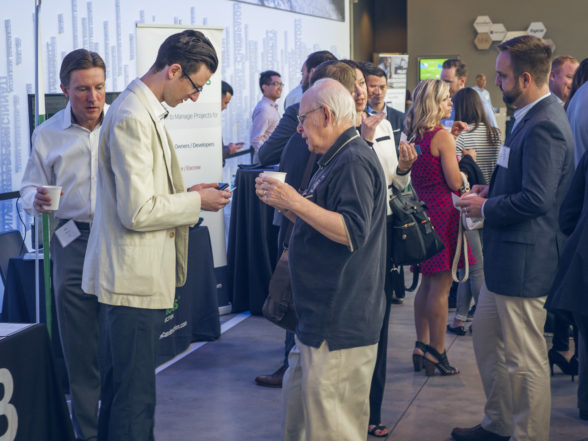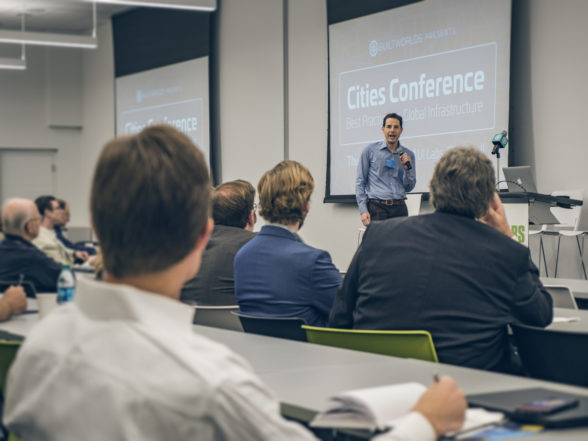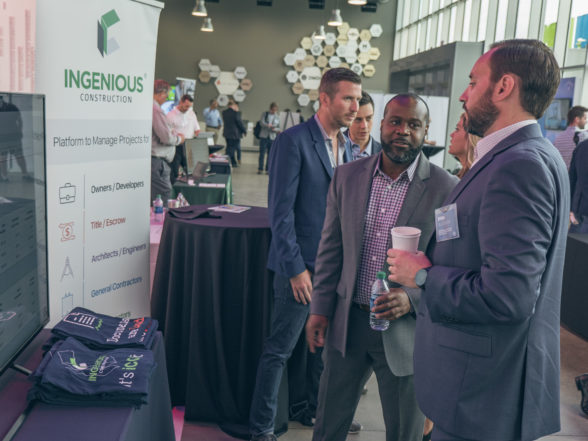
The BuiltWorlds Cities Conference gave voice to new ways of talking about 21st century cities. Many rich phrases came forth from an array of experts as they tried to define a new nexus for cities today — one encompassing nature, technology, finance, and design.

The day opened and closed with a clarion call for planning, showing this discipline to be key for achieving a proper balance of all factors.
Takeaway #1: We need to revisit long-range city planning.
D. Bradford Hunt, who is Vice President for Research and Academic Programs at Newberry Library, opened the day with his perspective on how bold long-range city planning, starting with the Central Area Plan of 1958, helped to stabilize and create the conditions for downtown Chicago to eventually thrive in the global era.
Hunt is coauthor of the book Planning Chicago, which is a must-read for anyone who cares about the city’s future (read a review of the book here). He states that the ’58 plan, and subsequent plans, committed the city to redeveloping the downtown business core and to ring it with residential districts built on reclaimed railroad land.
This was gradually achieved over the course of 40 years but it didn’t have to happen, as some were calling for focusing new development away from the Loop. It was good long-range planning, Hunt asserted, that enabled downtown Chicago to eventually become a major global center.
Hunt closed with the point that such planning has effectively ceased in Chicago, which is a cause of significant concern for the city’s future.
Indeed, the cities we see today, with commercial cores served by expressways stretching far into suburbia, are largely the concrete and steel legacies of 20th century planning. But what was heard through much of the rest of the day was language trying to convey how a very different city of the future is inexorably emerging, and how it could, or should, look.
Takeaway #2: How we consume products is shifting the way our supply chain and manufacturing infrastructure is built.
Karl Heitman, Principal of Heitman Architects, spoke of a “physical internet.” He explained how the internet-powered economy is essentially changing and reshaping cities and he showed how building design can respond to this fundamental change in urban form.

What’s happening, he said, is that the direct relation of consumer to producer is cutting out middle distribution sectors, causing a movement of manufacturing toward the point of consumption in cities.
Now, he said, the cost of energy has become a critical factor for companies, which are seeking human talent as their most valuable resource. In this context, the legacy of our 20th century infrastructure is obsolete.
He described a world where warehouses becoming obsolete, inventory is obsolete, and manufacturing is on-demand. This 24/7 demand network is the basis of the “physical internet,” the city now emerging.
This new city appears as supply chains continue shifting from fixed brick and mortar to a mobile network hub system. Such a distributed network might be composed of interconnected vehicles as much as actual buildings. But it implies a merger of warehouse and factory enabled by 3D printing and delivery technologies such as drones.
Drones and driverless vehicles will be part of the “last meter” in cities, he thinks, but he takes a realistic view, saying there’s no one solution and that drones will have limited capacity to meet all delivery demand. He does, however, put much credence in the concept of Hyperloop tunnels connecting distant cities and all parts of cities underground.
Heitman took his ideas further, speaking of a connecting loop of supply chains and recycle chains that encompass natural (storm water) and manmade (food) things and provide alternative energy. He also showed a scheme for a novel building form in this new urban environment, what he called a hyper-local community resource center. It is a multi-functional tall building with a storage and retrieval system in its middle, serviced from the air (drones) and from below ground — his concept set in Chicago’s Loop makes old urban systems new again by redeploying the city’s old freight tunnels.

Takeaway #3: Community and technology are the two keys to our city transportation.
Audrey Wennink, transportation specialist for the Metropolitan Planning Council, spoke of having a “sense of respect” for public transit in all city planning. She discussed the old way of regional planning with travel demand models based on automobile-throughput analysis. She showed how this has led to 1/3 of the land area in U.S. cities being consumed by transportation uses including parking. The unsurprising result, she said, is that everybody is now obsessed with traffic.

Wennink presented the fascinating example of Ashland Avenue in Chicago, on which there are more daily transit riders than car drivers most of the time, but most of the lanes are dedicated to cars. “So we’re not moving people, we’re moving cars,” she said.
A city shouldn’t be like this, Wennink believes, and she showed how the focus of transportation planning has moved to multi-modalism. This requires planners to take a much broader view, one that sees investment in transportation as investment in community. It requires designing not for cars but for people to shape urban character.
To achieve this, Wennink said, every transportation project must have multiple objectives, intending to move a community closer to its vision for the future. And this community-focused planning must underlay work to fit mobility and information technology into transportation projects. She acknowledged there is a lot of talk about automated vehicles and other innovations these days, but that keeps all the focus on technology. Transportation planning needs to broaden the discussion by engaging all people in communities, she said.
Looking for the last two takeaways? Click here!
About the author
Alan Mammoser is a journalist who writes about cities, environment, energy, infrastructure and planning. He also writes the blog WarmEarth.


Discussion
Be the first to leave a comment.
You must be a member of the BuiltWorlds community to join the discussion.